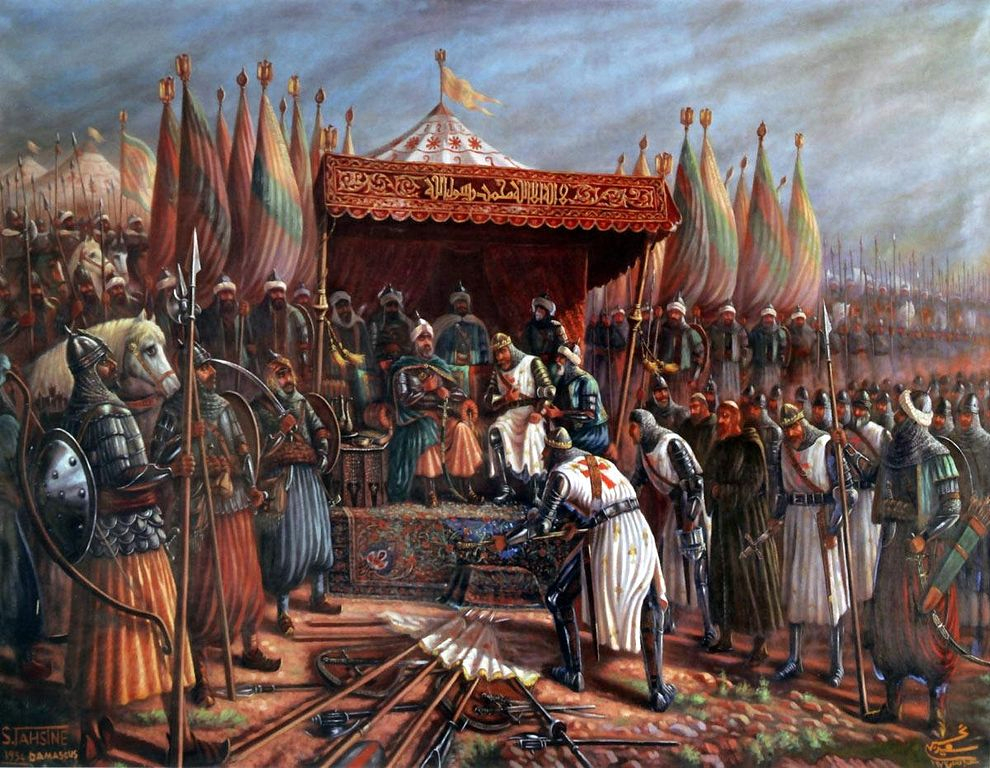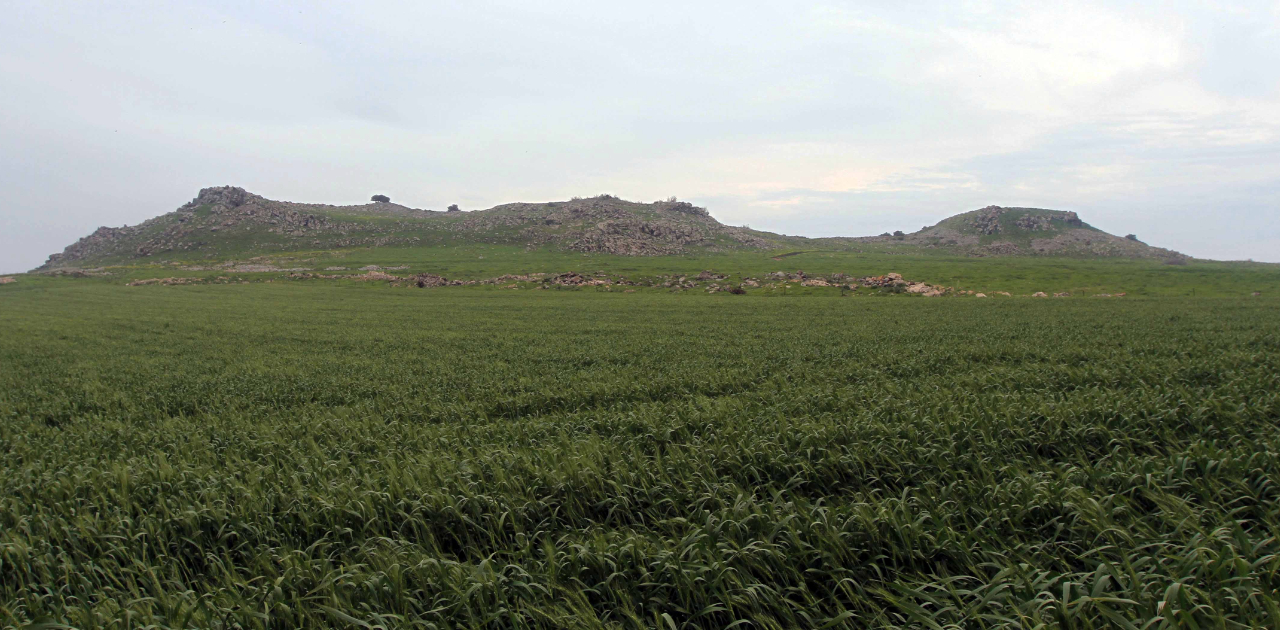Spending time around the Sea of Galilee is an important part of Christian pilgrimages to the Holy Land because of the area’s prominence in Jesus’ life and ministry. When we visit Galilee, we often lodge on the western lakeshore in the town of Tiberias. About 3 miles north of Tiberias stands a prominent natural feature and a dominant part of the western skyline called the “Horns of Hattin”. This low hill with a small peak at either end doesn’t figure directly into the stories of Jesus’ ministry, but it is important to the history of the area. Most pilgrims don’t know what it is or what happened there.

The shape of the ridge, which resembles a saddle with small peaks at opposite ends, earned it the name “Horns” of Hattin, the name of the adjacent village. It overlooks a small plain and is itself an extinct volcano. On this site on July 4, 1187, the Crusaders lost a decisive battle that changed the course of history.
Saladin, the Sultan of Egypt and Damascus, effectively brought Crusader control of the Holy Land to an end by defeating King Guy de Lusignan in the blistering Galilean summer heat. The Crusader forces began with a force of 1,200 knights and 16,000 infantry, but their failure to secure access to enough water and Saladin’s decision to attack from the east in the morning while the sun was in his opponents’ eyes gave the Muslim army an advantage. The fighting weakened the Crusader army and sent the foot soldiers and archers to the Horns of Hattin, which was higher and walled in at that time, and so was a more defensible position. The knights regrouped between the horns and attempted to defend the king. They launched several charges but were ultimately overwhelmed by Saladin’s advance. The Sultan captured the Crusader king and took complete control of the field.
The Crusader period in the Holy Land technically lasted from 1099 to 1291, when the last Crusader stronghold at Acre fell to the Mamluks. The battle at Hattin and Saladin’s recapture of Jerusalem in 1187 were a decisive turning point in that period. Jerusalem would come under Crusader control for several decades in the thirteenth century through diplomatic means, but the Mamluks would reabsorb it when Acre fell. In fact, the next major historical and archaeological period in the Holy Land is called the Mamluk period, which lasted from 1291 until the beginning of the Turkish period in 1517.


